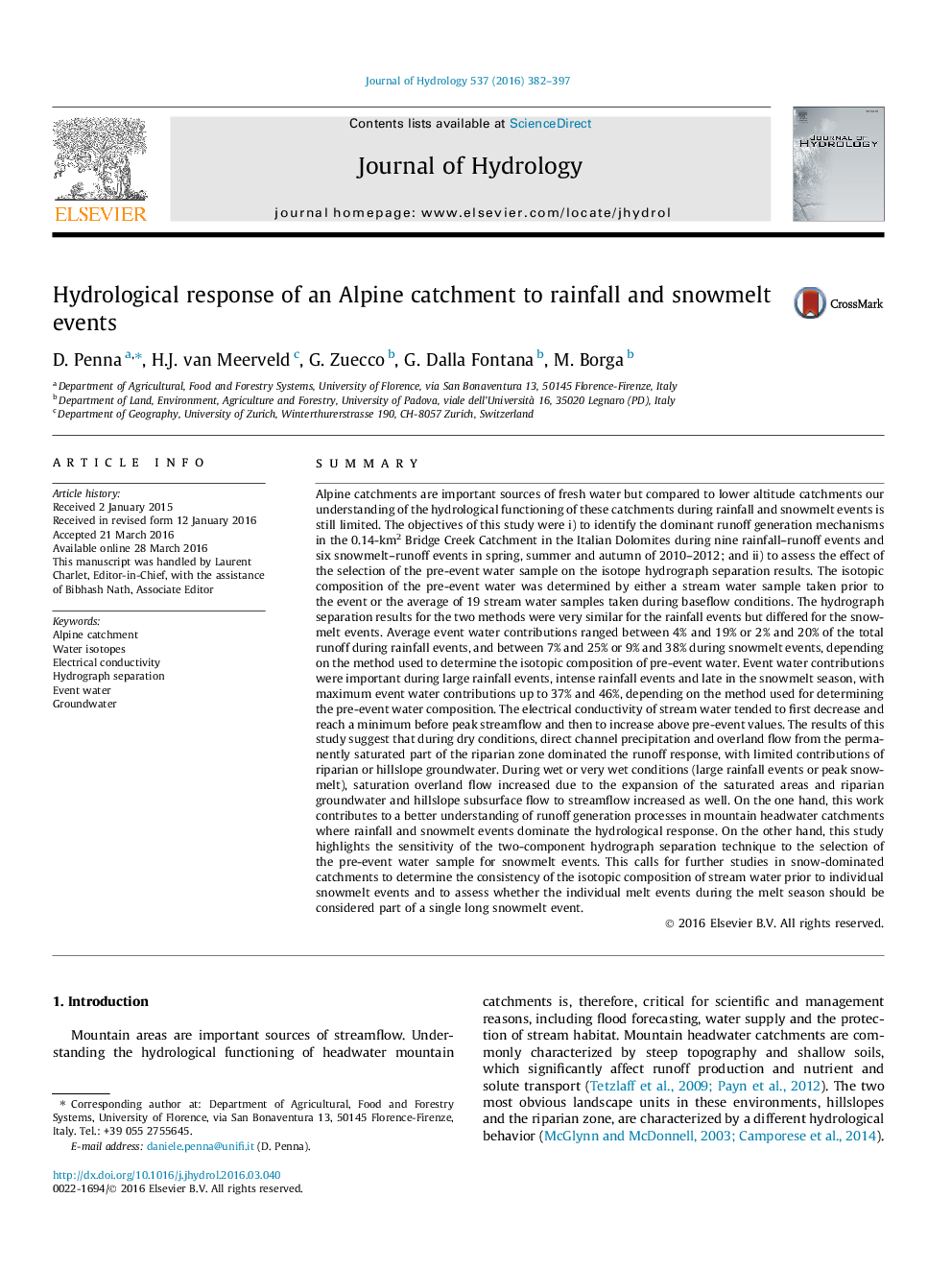| کد مقاله | کد نشریه | سال انتشار | مقاله انگلیسی | نسخه تمام متن |
|---|---|---|---|---|
| 6409809 | 1629915 | 2016 | 16 صفحه PDF | دانلود رایگان |
- Analysis of the response of an Alpine catchment to rainfall and snowmelt events.
- The selection of pre-event sample can affect hydrograph separation results.
- Event water contribution to streamflow is higher during large/intense rain events and late snowmelt events.
- Distinct runoff generation processes during dry and wet conditions.
SummaryAlpine catchments are important sources of fresh water but compared to lower altitude catchments our understanding of the hydrological functioning of these catchments during rainfall and snowmelt events is still limited. The objectives of this study were i) to identify the dominant runoff generation mechanisms in the 0.14-km2 Bridge Creek Catchment in the Italian Dolomites during nine rainfall-runoff events and six snowmelt-runoff events in spring, summer and autumn of 2010-2012; and ii) to assess the effect of the selection of the pre-event water sample on the isotope hydrograph separation results. The isotopic composition of the pre-event water was determined by either a stream water sample taken prior to the event or the average of 19 stream water samples taken during baseflow conditions. The hydrograph separation results for the two methods were very similar for the rainfall events but differed for the snowmelt events. Average event water contributions ranged between 4% and 19% or 2% and 20% of the total runoff during rainfall events, and between 7% and 25% or 9% and 38% during snowmelt events, depending on the method used to determine the isotopic composition of pre-event water. Event water contributions were important during large rainfall events, intense rainfall events and late in the snowmelt season, with maximum event water contributions up to 37% and 46%, depending on the method used for determining the pre-event water composition. The electrical conductivity of stream water tended to first decrease and reach a minimum before peak streamflow and then to increase above pre-event values. The results of this study suggest that during dry conditions, direct channel precipitation and overland flow from the permanently saturated part of the riparian zone dominated the runoff response, with limited contributions of riparian or hillslope groundwater. During wet or very wet conditions (large rainfall events or peak snowmelt), saturation overland flow increased due to the expansion of the saturated areas and riparian groundwater and hillslope subsurface flow to streamflow increased as well. On the one hand, this work contributes to a better understanding of runoff generation processes in mountain headwater catchments where rainfall and snowmelt events dominate the hydrological response. On the other hand, this study highlights the sensitivity of the two-component hydrograph separation technique to the selection of the pre-event water sample for snowmelt events. This calls for further studies in snow-dominated catchments to determine the consistency of the isotopic composition of stream water prior to individual snowmelt events and to assess whether the individual melt events during the melt season should be considered part of a single long snowmelt event.
Journal: Journal of Hydrology - Volume 537, June 2016, Pages 382-397
